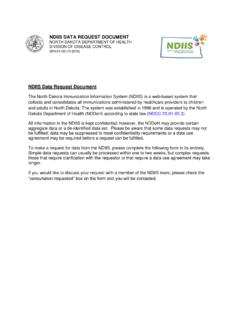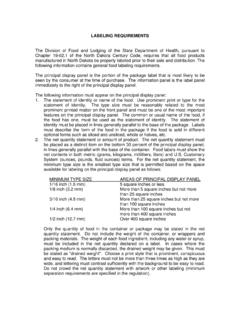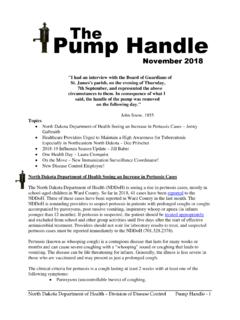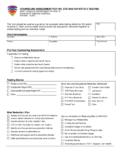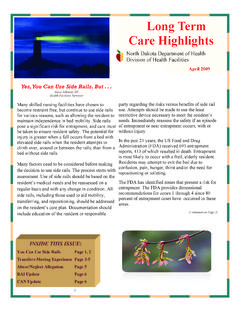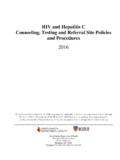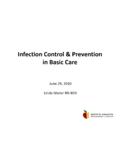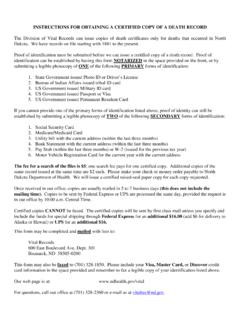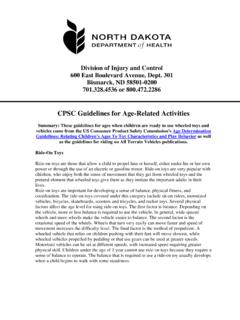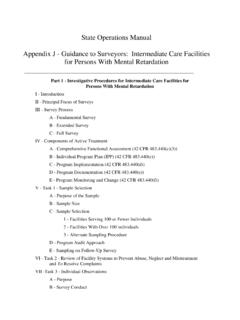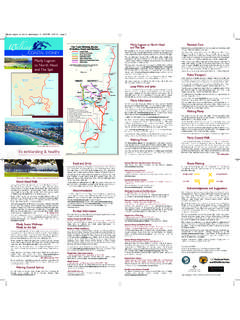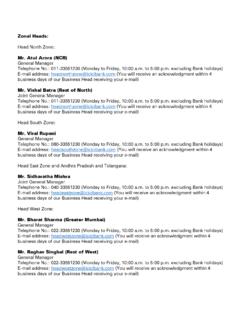Transcription of Head Lice - North Dakota Department of Health
1 head lice A Lousy Problem head lice A Lousy Problem Jack Dalrymple Governor of North Dakota Terry Dwelle, , State Health Officer Kim Mertz, , Director, Division of Family Health Thank you to those who assisted in development of this manual: Barb Andrist Upper Missouri District Health Unit Becky Bailey North Dakota Department of Health Jennifer Barry North Dakota Department of Human Services Amy Bowles Fargo Cass Public Health Valerie Fischer North Dakota Department of Public Instruction Barb Frydenlund Rolette County Public Health District Donna Holand Walsh County Health District Wanda Kratochvil Walsh County Health District Kirby Kruger North Dakota Department of Health Carol Manifold Medcenter One College of Nursing Alyssa Martin North Dakota School Boards Association Sarah Meyers North Dakota Child Care Resource & Referral Tracy Miller North Dakota Department of Health Evy Monzelowsky Bismarck-Burleigh Public Health Kathy Odegaard Custer Health Betty Otteson Grand Forks Public Health Cameo Skager Cameo Communications Revised April 2012.
2 To order copies of this manual, please contact: Division of Family Health North Dakota Department of Health 600 E. Boulevard Ave., Dept. 301. Bismarck, 58505-0200. Phone: press 1 or E-mail: This publication is available on the North Dakota Department of Health 's Division of Family Health website at This publication was supported with funding from the Department of Health and Human Services Health Resources and Services Administration, Social Security Act, Title V (Maternal and Child Health ). #B04MC17059. Table of Contents Definitions (as used in this manual)..3. What Are head lice ?..4. Life Cycle of Head Transmission of Head Detecting Head Management and Treatment ..8. 1) Careful inspection and screening of the hair and scalp to identify lice and/or nits 2) Use of a pediculicide product if live lice or viable nits are 11. 3) Cleaning of personal items and the 16.
3 4) Repeat treatment with the pediculicidal 18. Manual Removal of Nits .. 19. Schools, Child Care and 21. Myths and Facts .. 25. Fact Sheet head lice (Pediculosis).. 27. Quick Guide For Managing Head 29. head lice A Lousy Problem 1. Preface head lice (Pediculus humanus capitis) have been living on the scalps of humans for thousands of years. From the time of ancient Greece and Egypt, through the middle-ages and up to the present, the problem of head lice infestations has continued. head lice are present in our communities most of the time. There are no known Health risks from head lice , yet head lice may cause distractions, poor self-esteem and hesitancy to participate fully in school and/or recreational activities. Children and their families may feel embarrassed, angry, frustrated, guilty or ashamed that they are infested with head lice .
4 head lice can infest all people, regardless of age, race, socioeconomic status or hygiene practices. It is probable that head lice will never be eliminated completely; however, knowing the facts about head lice transmission, treatment and management will help to ensure the best control of infestations. This manual was developed to provide information about head lice , prevention actions, treatment options and guidelines appropriate for use in the home, child-care settings, schools and communities. There have been many changes in the recommended approaches regarding screening for and the management of head lice , including research finding that no-nit policies are ineffective in stopping transmission of head lice . Utilizing the 2010 recommendations of the American Academy of Pediatrics (AAP) as the primary reference and resource, this manual is designed to provide clarification of those recommendations for effective treatment and management of head lice .
5 At the end of this manual is a page discussing myths and facts, a fact sheet entitled head lice (Pediculo- sis capitis) and a Quick Guide. These pages may be reproduced and given to parents or others trying to get rid of head lice . 2 head lice A Lousy Problem Definitions (as used in this manual). AAP American Academy of Pediatrics CDC Centers for Disease Control and Prevention Host [hohst] an animal or person from which a parasite obtains nutrition Infestations [in-fe-stey-shuhn] being infested Infested [in-fest-ed] having insects in one's hair lice [lahys] more than one louse Louse [lahys] (singular) Pediculus humanus capitis ( head lice ), a small insect that lives on the scalp Nit [nit] eggs of a louse; may be alive or dead Neurotoxic [noor-oh-tok-sik, nyoor-] poisonous to nerve tissue, as to the brain or spinal cord Parasite [par-uh-sahyt] an organism that survives on the body of a host (in this case, lice live off humans).
6 Pediculicide [puh-dik-yuh-luh-sahyd] a lice -killing product Pediculosis [puh-dik-yuh-loh-sis] having an infestation of head lice Transmission [trans-mish-uhn, tranz-] the act of transporting Vector [vek-ter] any organism or item that carries head lice Viable [vahy-uh-buhl] being able to hatch or survive head lice A Lousy Problem 3. What Are head lice ? head lice (Pediculus humanus capitis) are small parasitic insects that live on the scalps and necks of people. Parasitic refers to an organism that survives on the body of a host. In the case of head lice , the host is a person. head lice live on people and not on animals. It is specific to people. The adult louse is flat, wingless and crawls. It does not have the ability to fly, hop or jump. lice tend to adapt to their surroundings (hair and skin color), and range in color from red, brown or black to gray- white and are often hard to see.
7 A louse is very small (about the size of a sesame seed), has six legs, a diamond-shaped head and an elongated body. The mouth is shaped like a stylet (a slender probe or tube). This allows the louse to pierce a person's scalp so it can feed (a blood meal). Head Louse Highly magnified louse lice at various stages of development, from egg to adult (magnified). Actual size 4 head lice A Lousy Problem Life Cycle of head lice The life cycle of the louse consists of three stages: Stage 1 Eggs: The head louse begins life as an egg, commonly referred to as a nit. Nits are laid by the adult female. The nits are firmly attached to the base of the hair shaft, next to the scalp, by a glue-like substance produced by the louse. Nits range in color from white, yellow, tan to grayish, depending upon the stage of develop- ment and whether or not they have hatched or been killed by treatment.
8 Nits are oval or teardrop shaped, smooth and very small (about the size of a knot of thread). Nits are hard to see and often are confused for dandruff, hair spray droplets or other debris. Stage 2 Nymphs: The nits are incubated by body heat for about seven to 12 days before they hatch to release a nymph. The nit shell remains on the hair shaft after hatching and becomes a dull yellow or translucent white and may have a wrinkled look. The nymph looks like an adult louse, but is only about the size of a pinhead. Nymphs need a blood meal within hours of hatching to survive. During the next seven to 10 days, the nymph continues to grow and mature, going through three molts, until it becomes a full adult louse. Stage 3 Adults: The adult louse is about the size of a sesame seed. The life span of an adult louse is about three to four weeks.
9 The female usually is larger than the male and can lay up to 10 nits per day (only nits that are fertilized will develop and hatch). The live adult louse needs to feed on blood every three to six hours. Without blood meals, or once away from the human host, the adult louse can usually survive for no longer than 24 to 36 hours. Life Cycle of the Head Louse head lice A Lousy Problem 5. Transmission of head lice head lice are transmitted by: Person-to-person transmission (direct contact) The majority of transmissions of head lice occur by direct head-to-head contact with an already infested person. Contact is common during play (slumber parties, bed sharing, sport activities or games). Vector transmission (indirect contact) This may occur through using personal items of an infested person such as combs, brushes, bedding, scarves, hair ornaments, hats and helmets.
10 Although transmission via indirect contact rarely occurs and is unlikely, it is possible. All people can get head lice ; however, some individuals are at greater risk than others. Those individuals include: Children between the ages of 3 and 11 years are most often infested. Girls are more likely to get head lice than boys, possibly because of their play styles and sharing personal items ( Centers for Disease Control and Prevention [CDC]). Hair length does not seem to matter in regards to likelihood of getting lice . Although all races can get head lice , studies in the United States show children of African American descent are less likely to become infested. 6 head lice A Lousy Problem Detecting head lice The gold standard for diagnosing head lice is finding a live louse on the head. Nits that are viable are usually found at the nape of the neck or behind the ears, within -inch of the scalp (CDC).
